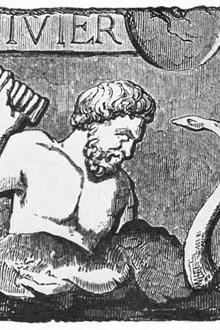Three Thousand Years of Mental Healing by George Barton Cutten (best large ereader txt) 📕

For a great many years physicians have recognized that not only are all diseases made worse by an incorrect mental attitude, but that some diseases are the direct result of worry and other mental disturbances. The mental force which causes colored water to act as an emetic, or postage-stamps to produce a blister, can also produce organic diseases of a serious nature. The large mental factor in the cause of diseases is generally admitted, and it seems reasonable to infer that what is caused by mental influence may be cured by the same means. There is no restriction in the power of the mind in causing disease, and should we restrict the mind as a factor in the cure? The trouble seems to be in the explanation. People ask, "How can the mind have such an effect upon the body?" and to the answer of this question we must now turn
Read free book «Three Thousand Years of Mental Healing by George Barton Cutten (best large ereader txt) 📕» - read online or download for free at americanlibrarybooks.com
- Author: George Barton Cutten
- Performer: -
Read book online «Three Thousand Years of Mental Healing by George Barton Cutten (best large ereader txt) 📕». Author - George Barton Cutten
3 A. D. White, History of the Warfare of Science with Theology, II, p. 113.
4 E. Salverte, Philosophy of Magic (trans. Thompson), II, p. 94.
5 W. E. H. Lecky, History of European Morals, I, p. 378.
6 Ibid., I, p. 383.
7 Réponse a l'histoire des oracles, p. 296.
8 A. D. White, History of the Warfare of Science with Theology, II, p. 101.
9 H. T. Buckle, History of Civilization in England, II, p. 270.
10 G. F. Fort, History of Medical Economy During the Middle Ages, p. 201.
11 For a full discussion of this subject, see A. D. White, History of the Warfare of Science with Theology, II, pp. 97-134.
12 A. D. White, History of the Warfare of Science with Theology, II, p. 128.
13 Nash, Life of Lord Westbury, II, p. 78.
14 Cockayne, Leechdoms, Wort-cunning, and Star-craft of Early England, II, p. 177.
15 M. H. Dziewicki, "Exorcizo Te," Nineteenth Century, XXIV, p. 580.
16 For a full discussion of this subject, see A. D. White, History of the Warfare of Science with Theology, II, pp. 1-167.
17 T. J. Pettigrew, Superstitions Connected with the History and Practice of Surgery and Medicine, pp. 51 f.
18 G. F. Fort, History of Medical Economy During the Middle Ages, pp. 142 f.
19 E. Salverte, Philosophy of Magic (trans. Thompson), II, p. 96.
20 E. A. King, "Medieval Medicine," Nineteenth Century, XXXIV, p. 151.
For further references to the effect of demonism, see J. F. Nevius, Demon Possession and Allied Themes; J. M. Peebles, The Demonism of the Ages and Spirit Obsessions; articles on "Demon," "Demonism," "Demoniacal Possession," and "Devil," in the Catholic Encyclopedia, the New International Encyclopedia, and the Encyclopedia Britannica.
CHAPTER IV RELICS AND SHRINESA wide-spread movement developed in the early church as a result of which innumerable miracles of healing were credited to the power of saints, indirectly through the medium of streams and pools of water which were reputed to have some connec tion with a particular saint, or through the efficacy still clinging to the relics of holy persons.
On account of the growth of the belief in demonism in the Christian church, and the need of supernatural means to counteract diabolic diseases, saintly relics came into common use for this purpose, and afterward when demonism was not so thoroughly credited as the cause of diseases, relics were still considered to hold their power over physical infirmities. In addition to this, the missionary efforts and successes of the church had some influence in establishing and continuing cures by relics and similar means. The missionaries found that their converts had formerly employed various amulets and charms for the healing of diseases, and that they continued to have great faith in them for that purpose. To wean them from their heathen customs, Christian amulets and charms had to be substituted, or, as was sometimes the case, the heathen fetich was continued, but with a Christian significance.
The early Scandinavians carried effigies carved out of gold or silver as safeguards against disease, or applied those made out of certain other materials, as the mandragora root or linen or wood, to the diseased part as a cure of physical infirmities. Some of these images were carried over into Christianity, for in Charlemagne's time, headache was frequently cured by following the saintly recommendation to shape the figure of a head and place it on a cross. Fort tells us that "The introduction of Christianity among the Teutonic races offered no hindrance to a perpetuation, under new forms, of those social observances with which Norse temple idolatry was so intimately associated. Offering to proselytes an unlimited number of demoniacal æons, similar in individuality and prowess to those peopling the invisible universe, Northern mythology readily united with Christian demonology."21
The relics of the saints came to be the favorite substitute for the heathen charms. With the acceptance of the demoniacal cause of disease, exorcism by relics gradually grew in importance until it was firmly established and a preferred form in the sixth and subsequent centuries. Down to this time there still existed a feeble recognition of a possible system adapted to the cure of maladies, so far, perhaps, as the practice was restricted to municipalities. The rapid advancement of saintly remedies, consecrated oils, and other puissant articles of ecclesiastical appliance, enabled and encouraged numerous churchmen to exercise the Æsculapian art; this, together with the ban put upon physicians and scientific means, soon gave the church the monopoly of healing. Perhaps the most thorough attestation of the contempt into which physicians had fallen, compared with saintly medicists, is the fact that cures were invariably attempted after earthly medicine had been exhausted.22
Islam, Buddhism, and other religions have their shrines where some pilgrims are undoubtedly cured, but Christianity seems to have had the most varied and numerous collection. As early as the latter part of the fourth century miraculous powers were ascribed to the images of Jesus and the saints which adorned the walls of most of the churches of the time, and tales of wonderful cures were related of them. The intercessions of saints were invoked, and their relics began to work miracles.23
St. Cyril, St. Ambrose, St. Augustine, and others of the early church fathers of note maintained that the relics of the saints had great efficacy in the cure of diseases. St. Augustine tells us: "Besides many other miracles, that Gamaliel in a dream revealed to a priest named Lacianus the place where the bones of St. Stephen were buried; that those bones being thus discovered, were brought to Hippo, the diocese of which St. Augustine was bishop; that they raised five persons to life; and that, although only a portion of the miraculous cures they effected had been registered, the certificates drawn up in two years in the diocese, and by the orders of the saint, were nearly seventy. In the adjoining diocese of Calama they were incomparably more numerous."24 This great and intellectual man also mentions and evidently credits the story that some innkeeper of his time put a drug into cheese which changed travellers who partook of it into domestic animals, and he further asserts after a personal test that peacock's flesh will not decay.
St. Ambrose declared that "the precepts of medicine are contrary to celestial science, watching, and prayer." When the conflict between St. Ambrose and the Arian Empress Justina was at its height, the former declared that it had been revealed to him that relics were buried in a certain spot which he indicated. When the earth was removed, there was exposed a tomb filled with blood, and containing two gigantic skeletons with their heads severed from their bodies. These were pronounced to be the remains of St. Gervasius and St. Protasius, two martyrs of gigantic physical proportions, who were said to have been beheaded about three centuries before. To prove beyond doubt the genuineness of these relics, a blind man was restored to sight by coming in contact with them, and demoniacs were also cured thereby. Before being exorcised, however, the demons, who were supposed to have supernatural and indubitable knowledge, declared that the relics were genuine; that St. Ambrose was the deadly enemy of hell; that the doctrine of the Trinity was true; and that those who rejected it would certainly be damned. To be sure that the testimony of the demons should have its proper weight in the controversy, on the following day St. Ambrose delivered an invective against all who questioned the miracle.25
Late researches concerning the Catacombs of Rome have thrown much light upon the early use of relics. The former opinion of the Catacombs was that they were used for secret worship by the persecuted Christians, but now we know that they were burial-places under the protection of Roman law, with entrances opening on the public roads. Their chapels and altars were for memorial and communion services. Great reverence was felt for the bodies of all Christians, so that for the first seven centuries the bodies were not disturbed, and relics, in the modern sense of the word, were unknown. People prayed at the tombs, or if they wished to take something away, they touched the tomb with a handkerchief, or else they took some oil from the lamps which marked the tombs. These mementos were regarded as true relics, so that when the Lombard Queen, Theodelinda, sent the abbot John for relics to put in her cathedral at Monza, he came back with over seventy little vials of oil, each with the name of the saint from whose tomb the oil was procured, and many of them are still preserved.
The oil from altar lamps was of therapeutic value, as St. Chrysostom tells us in speaking of the superiority of the church over ordinary houses. "For what is here," he asks, "that is not great and awful? Thus both this Table [the altar] is far more precious and





Comments (0)